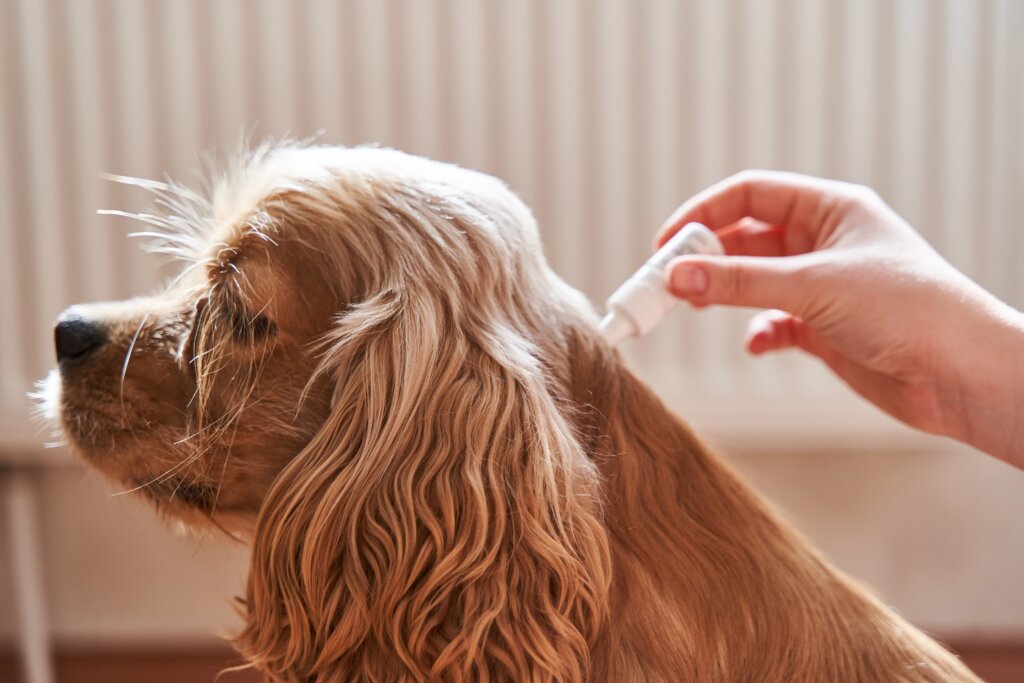As the weather warms up and flowers start to bloom, many of us look forward to the joys of spring. But for some of us and our dogs, springtime can also bring misery due to allergies. If you’ve noticed your dog itching, scratching, biting, or licking itself more often since the start of spring, they might be reacting to seasonal allergens.
Signs of Springtime Allergies in Dogs

Does your dog seem more uncomfortable lately? Check for these common symptoms of allergies:
Excessive Itching and Scratching: Your dog might be trying to relieve the itchiness caused by allergens.
Biting or Licking: Dogs often lick or bite their paws, skin, or fur in response to irritation. Keep an eye on their paws, as this is usually the first point of contact for allergens.
Dandruff: Some dogs may have dry, flaky skin due to allergies. If your dog suddenly starts getting dandruff, this can be a sign of springtime allergies.
Eyes and Ears: Dogs with allergies may develop red, watery eyes and inflamed, itchy ears, which can lead to ear infections in some cases.
Hot Spots and Inflammation: When dogs scratch and bite to relieve the itch, they can get small lesions that become infected. These areas are moist skin rashes, most commonly seen around the head, neck, and rump.
Common Offenders: Pollen, Plants and Bugs

Just like us, dogs can develop allergies to a variety of environmental factors:
Pollen: One of the most common allergens, pollen from trees, grasses and weeds, can trigger a reaction in dogs.
Plants: Some plants and flowers release allergens that can cause your dog to break out in a bumpy rash (hives) or develop other symptoms.
Bugs: Springtime means an increase in bug populations, and insect bites, especially from fleas, can lead to allergic reactions. Dogs are often allergic to flea saliva, leading to intense itching and discomfort.
Allergies Aren’t Just for Dogs
While dogs are more commonly affected by seasonal allergies, cats can also suffer from allergies, and it’s just as important that they get the necessary help. If you notice your cat scratching or showing signs of discomfort, it’s worth investigating further to ensure its health and happiness.
Act Early to Help Your Pet
If you suspect your dog (or cat) suffers from springtime allergies, it’s important to act early. Consult with your veterinarian to determine the cause of the symptoms and find the best treatment options. Whether it’s avoiding certain plants, using flea preventatives, or treating environmental allergens, early intervention can help your pet enjoy the season without the itch.
Prevention and Things we can do at home to help

Unfortunately, preventing allergies is nearly impossible, but there are plenty of things we can do and be mindful of that can help our pets who suffer from allergies. Here are just a few ways we can support our pets through springtime allergies.
Probiotics: A strong immune system can help pets regulate their reactions to allergens and fight off infections like hot spots. For pets with food allergies, it can also help with digestion. Using our Synbiotic Topper for Dogs and Cats is a great way to support and balance their digestive system, which in turn helps boost their immunity.
Flea + Parasite Prevention: Springtime is full of new life, including fleas, flies, and other nasty pests that your pets can be allergic to. Ensuring you have a strict routine for parasites is key to keeping them away from your animals. Don’t let their coverage lapse, and always check how long the product is designed to last. You’ll find that different parasites may have different protection periods.
Wash paws after going on walks: When it comes to going on walks with our pets, we tend to forget that we get to wear shoes that protect us from potentially touching allergens. Our pets don’t always have this option, so it may be beneficial to wash their paws after they’ve been on a walk to remove any grass, pollen, or other particles that may be potential allergens.
Research the best time to go on walks: Check pollen counts and avoid areas with high counts or wait for a time of day when levels will be at their lowest. You can’t completely stop your pets from being exposed to allergens, as most springtime allergies are caused by inhaled allergens floating around the environment.
